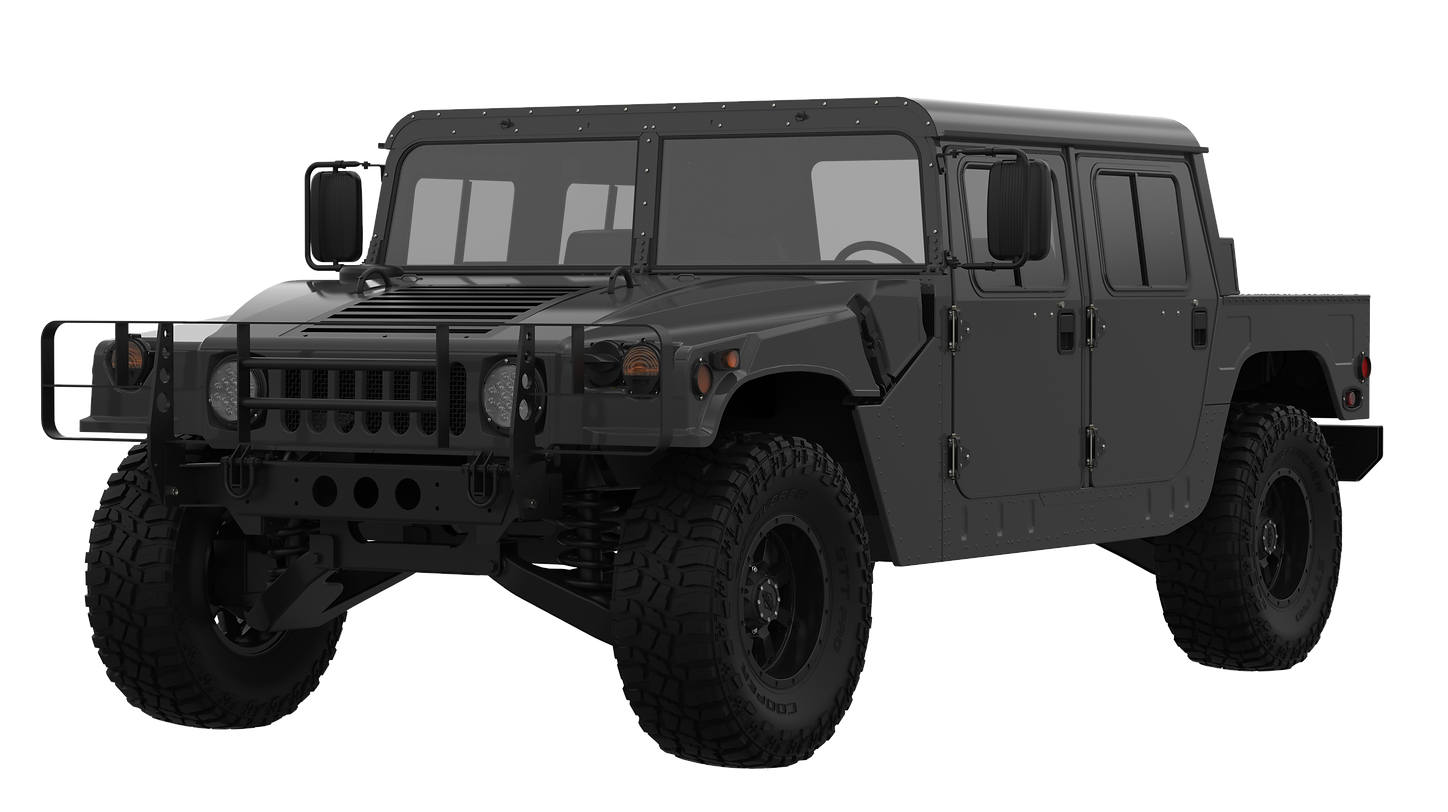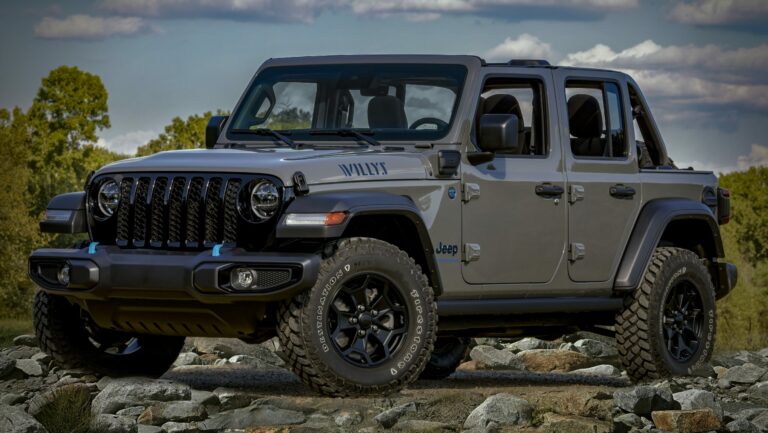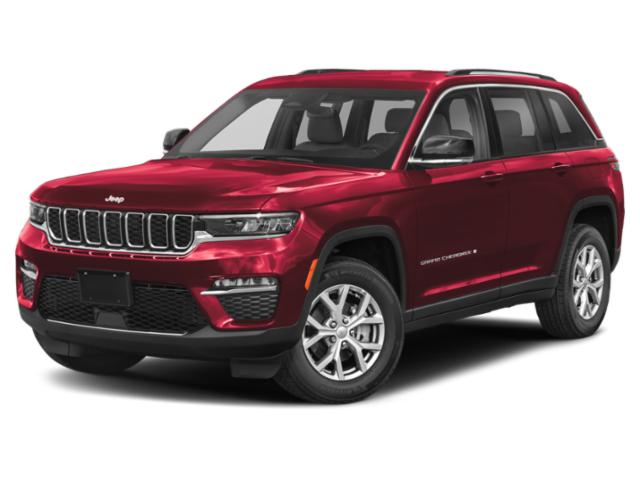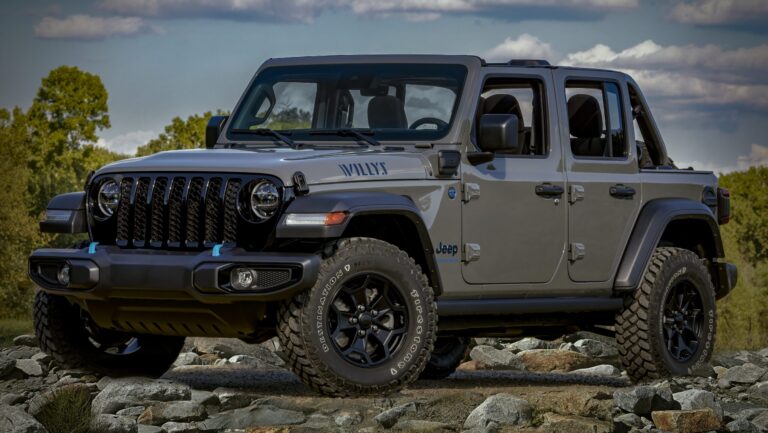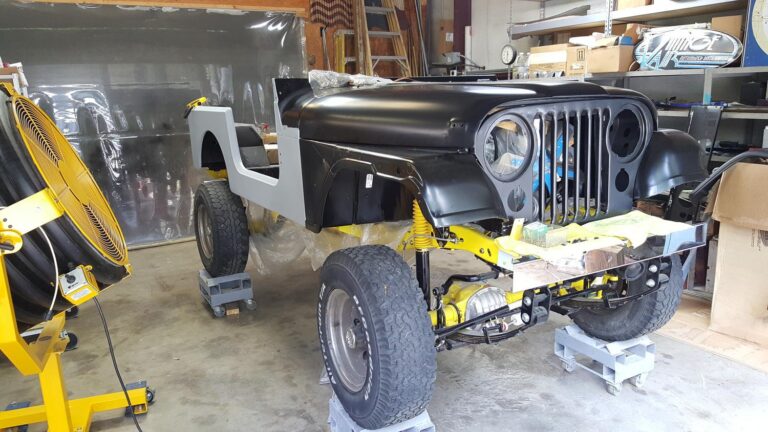Military Vehicles For Sale: Your Guide to Owning a Jeep or Hummer Surplus
Military Vehicles For Sale: Your Guide to Owning a Jeep or Hummer Surplus jeeps.truckstrend.com
The rumble of a robust engine, the silhouette of an iconic design, and the allure of unparalleled capability – these are the hallmarks of military vehicles. For decades, the public has been fascinated by the rugged dependability of vehicles like the legendary Willys Jeep and the formidable Humvee. Today, thanks to military surplus programs, these powerful machines are often available for civilian purchase, offering a unique opportunity to own a piece of history and a vehicle of extraordinary capability.
This comprehensive guide delves into the world of military vehicles for sale, specifically focusing on the renowned Jeep and Hummer platforms. We’ll explore their enduring appeal, the types available, the intricate buying process, crucial considerations, and practical advice to help you navigate this exciting, yet complex, market. Whether you’re an off-road enthusiast, a collector, or simply seeking a vehicle that stands apart, understanding the nuances of acquiring a military surplus Jeep or Hummer is paramount.
Military Vehicles For Sale: Your Guide to Owning a Jeep or Hummer Surplus
The Enduring Appeal: Why Buy a Military Surplus Vehicle?
Owning a military surplus vehicle transcends mere transportation; it’s about embracing a legacy of resilience, capability, and history.
- A Legacy of Durability and Performance: Military vehicles are built to withstand the harshest environments and most demanding operations. Their construction prioritizes robustness, simplicity, and repairability, making them incredibly durable. From the Willys Jeep’s role in winning World War II to the Humvee’s omnipresence in modern conflicts, these vehicles are proven performers.
- Unmatched Off-Road Prowess: Engineered for extreme terrain, military Jeeps and Hummers boast high ground clearance, powerful four-wheel-drive systems, robust suspension, and often specialized axles and drivetrains. This makes them exceptionally capable off-road, far surpassing most civilian counterparts.
- Unique Status and Customization Potential: These vehicles are head-turners. Their distinctive military aesthetics set them apart, offering a unique statement on the road or trail. Furthermore, their utilitarian design provides a blank canvas for extensive customization, from restoring them to original military specifications to transforming them into overlanding rigs or extreme rock crawlers.
- Potential Investment Value: For specific models, particularly well-preserved historical Jeeps or early HMMWVs, their value can appreciate over time, especially as they become rarer and more sought after by collectors.

Types of Military Vehicles Available: Jeep and Hummer Editions
The term "Jeep" in a military context primarily refers to several generations of light utility vehicles, while "Hummer" almost exclusively points to the High Mobility Multipurpose Wheeled Vehicle (HMMWV).
Military Jeeps: From WWII Icon to Vietnam Workhorse
The lineage of military Jeeps is rich and storied, evolving significantly over decades.
- Willys MB / Ford GPW (WWII Era): The original "Jeep." These iconic 1/4-ton 4x4s are highly sought after by collectors for their historical significance. They are basic, rugged, and mechanically simple, making them relatively easy to work on. Expect manual transmissions, minimal comfort, and a focus on pure utility. Prices vary wildly based on originality and condition.
- M38 / M38A1 (Korean War Era): Successors to the MB, these models introduced minor improvements. The M38 (based on the civilian CJ-3A) retained the flat-fender look, while the M38A1 (based on the civilian CJ-5) featured a rounder, more modern front end and a slightly longer wheelbase. They offered 24-volt electrical systems and improved water-fording capabilities.
- M151 MUTT (Military Utility Tactical Truck) (Vietnam to Gulf War Era): A significant departure, the M151 series featured a unibody construction and independent suspension on all four wheels. More advanced and comfortable than its predecessors, the M151 is also known for a controversial rear suspension design that could lead to rollovers if driven improperly, leading to its eventual demilitarization by cutting frames before public sale. It’s crucial to understand the demilitarization status and potential legal restrictions for road use on M151s.

Military Hummers (HMMWV – High Mobility Multipurpose Wheeled Vehicle)
The HMMWV, affectionately known as the Humvee, revolutionized military mobility. Unlike the civilian Hummer H1, which was based on the HMMWV, the military versions are purpose-built for combat and support roles.
- M998 Series (Original Workhorse): The most common HMMWV available as surplus. These early models are typically unarmored (or lightly armored) and come in various configurations:
- M998 Cargo/Troop Carrier: Open-top or soft-top, designed for transporting personnel and equipment.
- M1038: Similar to M998 but with a winch.
- M997/M1035: Ambulance variants.
- M1025/M1026: Armament carriers (often with turrets removed before sale).
- Key Differences from Civilian H1: Military HMMWVs often have different engine options (typically Detroit Diesel 6.2L or 6.5L NA), basic interiors, lack of creature comforts, military-specific electrical systems, and heavier-duty components. They are also usually sold in a "demilitarized" state.
- Legal Considerations: Due to their size, weight, and lack of civilian safety features, titling and registering HMMWVs for road use can be challenging and vary significantly by state.
Where to Find Military Vehicles for Sale
Acquiring a military surplus vehicle is not like buying a used car from a dealership. The primary sources are government surplus channels.
- Government Auctions (Primary Source):
- GovPlanet / IronPlanet: These are the largest online marketplaces for U.S. government surplus, including vehicles. They offer detailed inspection reports, photos, and often videos. This is generally the most reliable way to purchase a demilitarized HMMWV.
- General Services Administration (GSA) Auctions: Less common for large vehicles, but worth checking.
- State/Local Government Auctions: Occasionally, state National Guard units or local law enforcement agencies may surplus vehicles.
- Specialized Dealers: Numerous private dealers specialize in buying military surplus vehicles from auctions, restoring them (or performing basic repairs), and reselling them to civilians. They often handle the challenging titling process, which can justify their higher prices.
- Online Marketplaces & Forums: Websites like eBay, Craigslist, and dedicated military vehicle forums (e.g., G503.com for Jeeps, SteelSoldiers.com for HMMWVs) can list vehicles for sale by private owners. Exercise extreme caution and always conduct thorough due diligence when buying privately.
The Buying Process: What to Expect and How to Prepare
Purchasing a military surplus vehicle requires more than just a winning bid; it demands meticulous preparation and attention to detail.
- Research Extensively: Before you even look, decide which model best fits your needs, budget, and mechanical capabilities. Understand common issues, parts availability, and model-specific quirks.
- Budget Beyond the Purchase Price: Factor in transport costs, potential repairs, parts (which can be specialized and expensive), modifications for road legality, insurance, and ongoing maintenance.
- Inspect Thoroughly (Crucial!):
- Auction Inspections: Rely on the inspection reports provided by GovPlanet/IronPlanet, but understand they are for general guidance.
- In-Person Inspection: If possible, always inspect the vehicle yourself or hire a knowledgeable third-party inspector. Look for rust, frame damage, evidence of demilitarization cuts (and proper repair), engine condition, drivetrain issues, and electrical problems. Many vehicles are sold "as-is, where-is."
- Understand Demilitarization (Demil) Status: This is perhaps the most critical aspect. The U.S. military "demilitarizes" vehicles before selling them to prevent their re-entry into military service. This often involves cutting the frame, engine block, or other critical components.
- Category A Demil: Minor components removed or destroyed.
- Category B Demil: Major components (engine, transmission, frame) cut or destroyed.
- Repairs: For vehicles with Category B demil, extensive, professional welding and repair are required to make them functional and safe. Ensure these repairs are done to a high standard.
- Titling and Registration Challenges: This is often the biggest hurdle. Many surplus HMMWVs are sold with "Off-Road Use Only" titles or no title at all. States have varying regulations regarding titling military vehicles, especially those not originally designed for civilian road use. Some states require extensive modifications and inspections to deem them roadworthy. Be prepared for potential bureaucratic headaches, and research your state’s specific laws before buying.
- Transportation: These are heavy, often non-running vehicles. Arrange for appropriate transportation (flatbed tow truck or specialized hauler) from the auction site or seller to your location.
Important Considerations Before You Buy
Beyond the purchasing process, several factors influence the long-term ownership experience.
- Legality and Roadworthiness: As mentioned, achieving street-legal status can be complex. This includes not just titling but also meeting state-specific safety inspections, emissions standards (especially for older diesel engines), and ensuring all lights, signals, and safety features are operational.
- Parts Availability and Maintenance: While common parts for Jeeps (especially older CJs) are readily available, HMMWV parts can be specialized and expensive. Maintenance often requires specific tools and knowledge, or finding mechanics familiar with military vehicles. Join owner communities to tap into collective knowledge and resources for parts.
- Fuel Economy: Be realistic. These vehicles are heavy, powerful, and not designed for fuel efficiency. Expect single-digit to low-double-digit MPG figures.
- Comfort and Practicality: Military vehicles prioritize function over comfort. Interiors are sparse, noise levels are high, and rides can be stiff. They are not ideal daily drivers for everyone, especially for long commutes or family transport.
- Insurance: Insuring a military surplus vehicle can be challenging. Some standard insurance companies may be hesitant or offer limited coverage. Specialized classic car or military vehicle insurance providers might be necessary.
- Resale Value: While some models can appreciate, others may depreciate significantly if not well-maintained or if they have significant demil damage.
Restoration, Customization, and Upgrades
Once you own your military vehicle, the journey often continues with restoration or customization.
- Restoration to Original Spec: Many enthusiasts meticulously restore their Jeeps or HMMWVs to their exact military configurations, including correct paint, markings, and period-accurate accessories. This requires significant research and dedication.
- Modernization and Customization: Others opt to modernize their vehicles for improved performance, comfort, or off-road capability. Common upgrades include:
- Engine Swaps: Replacing original engines with more powerful or fuel-efficient civilian alternatives (e.g., Cummins diesels, LS V8s for HMMWVs).
- Transmission Upgrades: Swapping manual transmissions for automatics, or upgrading existing automatics.
- Suspension Lifts and Larger Tires: Enhancing ground clearance and off-road grip.
- Interior Improvements: Adding better seating, sound deadening, HVAC systems, and modern electronics.
- Exterior Accessories: Winches, LED lighting, roof racks, armored bumpers, and recovery gear.
Practical Advice and Actionable Insights
- Join the Community: Online forums (e.g., G503.com, SteelSoldiers.com, military vehicle collector clubs) are invaluable resources for advice, parts, and camaraderie.
- Verify Paperwork: Do not finalize any purchase until you have thoroughly reviewed all titles, bills of sale, and demil certificates.
- Start Small: If you’re new to military vehicles, an older, simpler Jeep might be a more manageable project than a complex HMMWV.
- Have a Dedicated Space: You’ll need space for maintenance, repairs, and storage, as these vehicles can be large.
- Be Patient: The buying and restoration process can be lengthy and require patience.
Military Vehicles For Sale: Estimated Price Guide
Prices for military surplus vehicles fluctuate based on condition, mileage, demilitarization status, year, model, and current market demand. The table below provides a general range for common models. These prices are for the purchase price only and do not include transport, repairs, or titling costs.
| Vehicle Type | Model/Variant | Typical Condition | Estimated Price Range (USD) | Key Features / Notes |
|---|---|---|---|---|
| Military Jeeps | Willys MB / Ford GPW | Varies from rusty parts car to fully restored | $10,000 – $60,000+ | WWII icon. Basic, manual, collectible. High end for original, running examples. Restoration projects can be cheaper but require significant investment. |
| M38 / M38A1 | Running but needs work to restored | $8,000 – $30,000 | Korean War era. Slightly more refined than MB. M38A1 is more common and shares parts with CJ-5. | |
| M151 MUTT (A1/A2) | Often sold demilitarized, requires extensive repair | $3,000 – $15,000 | Vietnam era. Unibody, independent suspension. Often sold with frame cuts (demilitarized). Street legality is challenging and state-dependent. Prices vary hugely based on demil status and if it’s already repaired/titled. | |
| Military Hummer | HMMWV (M998, M1038) | Running but rough, to decent running condition | $10,000 – $35,000 | Most common surplus Humvee. Diesel engine (6.2L/6.5L NA). Unarmored. Often sold with "Off-Road Use Only" title or no title. Extensive work required for street legality in many states. Lower end for heavily demilled or non-running units, higher for well-maintained or pre-titled. |
| HMMWV (M1025, M1035) | Running but rough, to decent running condition | $12,000 – $40,000 | Armament carrier or ambulance variants. Often higher demand due to versatility or specific configurations. Similar titling challenges. | |
| HMMWV (Armored) | Very rare on surplus market, high demand | $40,000 – $100,000+ | Rarely available to civilians due to ITAR restrictions and extensive demil requirements. Civilian H1s are more common for those seeking armor. |
Note: These are estimates. Market conditions, vehicle specific history, and sale channel (auction vs. dealer) will significantly impact the final price.
Frequently Asked Questions (FAQ)
Q1: Are military vehicles street legal?
A1: It depends heavily on the specific vehicle model, its demilitarization status, and your state’s laws. Older Jeeps (Willys MB, M38) are often easier to title and register. HMMWVs are much more challenging; many are sold with "Off-Road Use Only" titles, and making them street legal can involve significant modifications and overcoming state-specific hurdles. Always research your local DMV regulations before purchase.
Q2: What is "demilitarization" and how does it affect me?
A2: Demilitarization (Demil) is the process by which the military renders equipment unusable for combat purposes before selling it as surplus. For vehicles, this often means cutting the frame, engine block, or other critical components. If a vehicle has undergone Category B demil, you will need to perform extensive, professional repairs to make it functional and safe, which adds significant cost and complexity.
Q3: Can I get parts for these vehicles?
A3: Yes, but availability varies. For older Jeeps (Willys, M38), many parts are still manufactured or available through specialist suppliers and enthusiast communities. For HMMWVs, parts can be more specialized and expensive, often requiring sourcing from military surplus suppliers or dedicated HMMWV parts dealers.
Q4: How much does it cost to maintain a military vehicle?
A4: Maintenance costs can be higher than for a typical civilian vehicle. Parts can be more expensive or harder to find, and specialized knowledge may be required for repairs. Expect higher fuel costs due to poor fuel economy. Factor in potential for unexpected repairs, especially if buying a vehicle in "running but rough" condition.
Q5: Are they comfortable to drive daily?
A5: Generally, no. Military vehicles are designed for rugged utility, not comfort. They often lack amenities like air conditioning, power steering/brakes (in older models), sound insulation, and comfortable seating. The ride can be harsh, and noise levels are high. They are best suited for recreational use, off-roading, or as unique project vehicles.
Q6: Can I insure a military vehicle?
A6: It can be challenging. Many standard insurance companies may not cover them, or may only offer liability. You may need to seek out specialty insurance providers that cater to classic cars, military vehicles, or off-road vehicles. Be prepared to provide detailed information about the vehicle’s condition and intended use.
Conclusion
Owning a military surplus Jeep or Hummer is an extraordinary endeavor that offers a unique blend of historical significance, unparalleled capability, and an undeniable cool factor. From the battle-hardened Willys MB to the imposing HMMWV, these vehicles represent engineering designed for the most demanding conditions imaginable.
However, the journey from purchase to pavement (or off-road trail) is often fraught with challenges, from understanding complex demilitarization procedures and navigating state titling laws to sourcing specialized parts and performing extensive repairs. This is not a purchase for the faint of heart or those seeking a turnkey solution.
For the dedicated enthusiast, the mechanic at heart, or the adventurer seeking the ultimate off-road machine, the rewards of owning a piece of military history can far outweigh the hurdles. With thorough research, a realistic budget, and a willingness to embrace the unique aspects of military vehicle ownership, you can indeed bring home a legendary Jeep or Hummer and forge your own legacy with these formidable machines.

